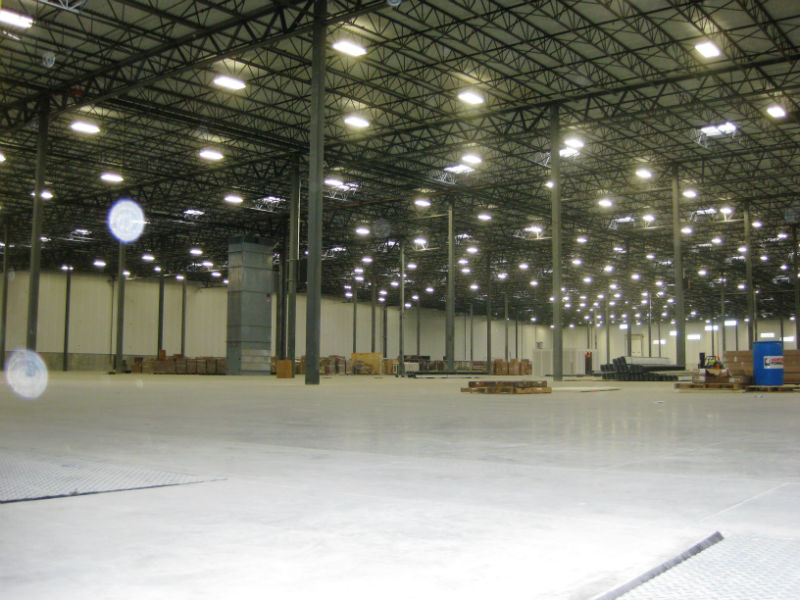Posted on January 27, 2022
Concrete offers an unbeatable combination of resiliency, versatility and price. It can be cast into endless shapes. It is integral to almost every new commercial and residential building. Those buildings will continue to proliferate worldwide. In fact, one estimate suggests the number of buildings worldwide doubling by 2060. That’s the equivalent of building another New York City every month — for the next 40 years!
Every year, the global concrete industry produces about one pound of concrete for every person on the planet. Global concrete revenue will reach $972 billion by 2030, up from $671 billion in 2020. That's a compound average growth rate (CAGR) of 4.7%.
The Environmental Challenge
Cement and concrete production come with various environmental challenges. Most prominent is carbon emissions. At present, global cement production yields 2.7 billion tons of CO2 emissions per year.
A key question remains. How is it possible to achieve deep decarbonization of cement production?
Conquering the energy-intensive calcination process is the top priority. Calcination’s environmental challenge is two-fold. During the process, CO2 emissions come from two sources:
The decomposition of calcium carbonate (CaCO3) to calcium oxide (CaO).
The combustion of fossil fuels during calcining (∼900 °C) and sintering (∼1,300 °C).
Toward Emissions-free Cement
One way to reduce cement’s carbon footprint is to switch from ordinary Portland cement (OPC) to Portland limestone cement (PLC). The addition of 10% milled limestone in PLC reduces emissions by a tenth.
However, with carbon neutrality the goal by 2050, new technologies are a must. New processes are now proposed to limit or entirely bypass traditional calcination. One is electrochemical synthesis. The use of an alkali-activated binder is another.
Electrochemical synthesis
Researchers at MIT developed an electrochemical decarbonation reactor that converts calcium carbonate (CaCO3) to calcium hydroxide (Ca(OH)2) for cement synthesis. A decarbonation cell takes advantage of the pH gradient produced by neutral water electrolysis. CaCO3 dissolves at the acidic anode and precipitates Ca(OH)2 where pH exceeds 12.5.
The reaction generates hydrogen at the cathode. It generates oxygen and carbon dioxide at the anode. The reaction generates a stream of hydrogen and another stream of oxygen and carbon dioxide. It is possible to harness these gas streams in productive ways:
Hydrogen generates power via fuel cells
Oxygen generates power via combustors
Carbon dioxide is readily separated and sequestered
The O2/CO2 gas stream created by the electrochemical process described can serve as an oxy-fuel in a high-temperature kiln. In one experiment, 30-35% oxygen enrichment increased kiln production 25-50%. Finally, carbon capture becomes more efficient, since the flue gas contains a higher concentration of CO2.
The hydrogen can also be used to heat cement kilns. In this scenario, renewable energy powers the process.
It is already possible to remove CO2 from kiln exhaust through calcium looping, amine scrubbing and membrane filtration. However, the electrochemical process offers two key advantages. First, it offers the prospect of oxy-fuel combustion. Second, it offers enhanced post-combustion capture of CO2.
Compared to regular air combustion, oxy-combustion improves fuel efficiency. The reason is evident: there is no need to heat the 78% of the air that is nitrogen. The absence of nitrogen increases flame temperatures while eliminating nitrous oxide emissions.
Nitrous oxide is a problematic greenhouse gas. It accounts for 7% of U.S. greenhouse gas emissions. However, its climate warming potential is 298 times that of carbon dioxide. Part of the problem is that nitrous oxide remains in the atmosphere for 114 years. Nitrous oxide also contributes to other harmful atmospheric components. Acid rain, ozone depletion and smog are examples.
Alkali-activated binder
Researchers at Johannes Gutenberg University (JGU) in Mainz, Germany, propose another calcination alternative. They propose the use of an alkali-activated binder. Their process bypasses calcination by grinding raw lime together with sodium silicate. This eliminates the traditional step of converting raw lime into burnt lime in coal-fired kilns. Instead it is simply milled with sodium silicate (Na2SiO3). Milling yields an activated mix of cement components. This mix reacts with a sodium hydroxide solution to yield a calcium silicate hydrate kind of product.
The milling of raw lime and sodium silicate occurs at room temperature. Power requirements are just 120 KwH/ton, only one-tenth of the energy required for calcination. Widespread adoption of this new process could substantially reduce cement’s CO2 emissions.
The JGU researchers say that obstacles to widespread adoption remain. Laboratory testing is not comparable to industrial-scale production. The study’s co-author, Marcel Maslyk, cautions, "This may be a first step for a non-conventional way of cement production, but it is not yet a fully developed solution." Successful scaling of the process demands further advances in development, design and maintenance.
The researchers estimate that addressing all the technical challenges could take years. This makes the alkali-activated binder more of a long-term solution. Still, it’s potential impact on the cement industry’s CO2 emissions could be significant, particularly if technological breakthroughs follow.
Conclusion
Can an electrochemical process or an alkali-activated binder prove to be a viable alternative to traditional calcination? Yes, if the process is cost-competitive and feasible at scale. Developing the infrastructure to massively deploy such calcination alternatives will take time. With carbon neutrality the long-term goal, the cement industry should consider any new technologies that materially reduce emissions.
About PACA
The Pennsylvania Aggregates and Concrete Association (PACA) reports on developments throughout the industry. We welcome any questions you may have about your upcoming concrete project. Please contact us for further assistance.

